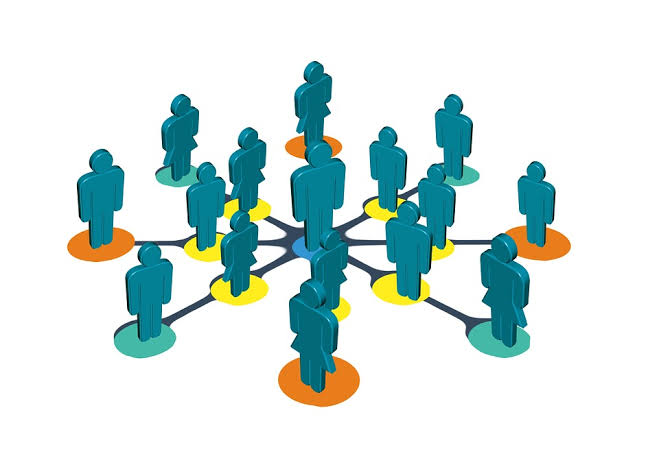In every society, institutions play a crucial role in shaping its governance, economy, and overall development. From governments to judicial systems, educational institutions to regulatory bodies, these entities form the backbone of societal structure. Effective and resilient institutions are essential for ensuring stability, promoting progress, and addressing the evolving needs of a dynamic world. This article delves into the factors that contribute to the creation of such institutions and explores their significance in building prosperous and resilient societies. The most popular question on the topic is “How do societies create effective and resilient institutions, such as governments?”
Table of contents
1. Introduction
Institutions serve as the infrastructure upon which societies are built. They provide the framework for governance, establish the rule of law, and ensure the efficient functioning of various sectors. Effective and resilient institutions are vital for fostering trust, stability, and progress within societies. This article explores the key factors that contribute to the creation of such institutions and delves into the challenges faced in their establishment. Additionally, it presents case studies of successful institution building and outlines strategies to ensure their resilience in the face of evolving challenges.
2. The Importance of Effective and Resilient Institutions
Effective and resilient institutions form the bedrock of a functional society provide a stable environment for economic growth, protect the rights and welfare of citizens, and ensure the efficient delivery of public services. These institutions contribute to social cohesion, trust-building, and the prevention of conflicts. Furthermore, they create an enabling environment for innovation, entrepreneurship, and sustainable development.
3. Factors Contributing to Institution Building
Building effective and resilient institutions requires a comprehensive approach that encompasses various factors. The following subheadings highlight some of the key elements necessary for successful institution building:
3.1. Clear Vision and Leadership
Strong leadership with a clear vision is essential for institution building. Leaders must articulate a compelling vision, set goals, and establish a roadmap for institutional development. They should inspire trust, provide direction, and rally support for the necessary reforms.
3.2. Rule of Law and Accountability
Institutions must operate within a framework of laws that are fair, just, and transparent. The rule of law ensures that institutions function impartially and that individuals and organizations are held accountable for their actions. Effective mechanisms for oversight and enforcement are crucial for maintaining accountability.
3.3. Citizen Participation and Inclusivity
Inclusive institutions engage citizens in decision-making processes, promote social cohesion, and ensure representation of diverse perspectives. By involving all stakeholders, institutions can better address the needs and aspirations of the society they serve.
3.4. Transparency and Openness
Transparency and openness are critical for building trust and credibility in institutions. By ensuring transparency in processes, decision-making, and resource allocation, institutions can foster public confidence and mitigate corruption.
3.5. Capacity Building and Knowledge Transfer
Investing in capacity building, education, and skills development within institutions is vital for their effectiveness and resilience. Continuous learning and knowledge transfer promote innovation, adaptability, and improved service delivery.
3.6. Adaptability and Flexibility
Institutions must be able to adapt to changing circumstances, emerging challenges, and evolving societal needs. Flexibility in policy formulation, organizational structure, and decision-making processes enables institutions to remain relevant and effective.
4. Challenges in Establishing Effective and Resilient Institutions
Building effective and resilient institutions is not without its challenges. The following subheadings discuss some of the obstacles faced in the establishment of such institutions:
4.1. Historical and Cultural Factors
Historical legacies, cultural norms, and societal attitudes can impede institution building. Deep-rooted traditions, power structures, and resistance to change often pose significant challenges to reform efforts.
4.2. Political Interference and Corruption
Political interference and corruption undermine the autonomy, integrity, and effectiveness of institutions. Nepotism, patronage, and vested interests erode public trust and hinder the establishment of robust institutions.
4.3. Limited Resources and Capacity Constraints
Inadequate resources, both financial and human, can impede institution building. Limited budgets, lack of skilled personnel, and insufficient infrastructure hinder the development and functioning of effective institutions.
4.4. Rapid Technological Advancements
Technological advancements bring both opportunities and challenges. Institutions need to keep pace with the rapid changes brought about by technology to ensure that they remain relevant and effective in the digital age.
4.5. Globalization and Interconnectedness
In an interconnected world, institutions are increasingly affected by global forces and trends. Ensuring coherence, harmonization, and alignment with international standards while safeguarding national interests poses a significant challenge.

Case Studies: Successful Institution Building
Examining successful case studies of institution building can provide valuable insights into effective strategies. The following subheadings highlight a few notable examples:
5.1. Singapore: The Transformation of a City-State
Singapore’s remarkable transformation from a developing nation to a global economic powerhouse can be attributed to its effective institutions. Visionary leadership, long-term planning, and strategic governance have been instrumental in creating a robust and resilient governance framework.
5.2. Rwanda: Rebuilding from the Ashes
Rwanda’s journey from the devastation of the 1994 genocide to a stable and rapidly developing nation demonstrates the power of institution building. Focused leadership, inclusive governance, and a commitment to reconciliation have contributed to the country’s progress.
5.3. Finland: Education as the Foundation
Finland’s exceptional education system, consistently ranked among the best globally, exemplifies the importance of institutions in societal development. A strong emphasis on quality education, teacher training, and equity has played a pivotal role in Finland’s success.
5.4. Estonia: E-governance and Digital Innovation
Estonia’s innovative approach to e-governance has revolutionized its institutions and public services. By leveraging digital technologies, Estonia has created efficient, transparent, and citizen-centric institutions, leading to significant advancements in governance.
6. Ensuring Institutional Resilience
To ensure the resilience of institutions, proactive measures must be taken to address future challenges. The following subheadings outline strategies to promote institutional resilience:
6.1. Continuity Planning and Succession
Institutional continuity planning and smooth succession processes are crucial for ensuring stability and effective governance. Developing leadership pipelines and institutionalizing knowledge management systems can help mitigate disruptions.
6.2. Learning from Failures and Adaptation
Institutions should foster a culture of learning, allowing for the identification of failures and shortcomings. By analyzing and adapting to challenges, institutions can strengthen their resilience and enhance their effectiveness.
6.3. Innovation and Future-Proofing
Embracing innovation, investing in research and development, and staying abreast of emerging trends are essential for future-proofing institutions. Proactive adoption of technology and a willingness to experiment can enhance efficiency and effectiveness.
6.4. Collaboration and Partnerships
Institutional resilience can be bolstered through collaboration and partnerships. Engaging with diverse stakeholders, sharing knowledge and best practices, and fostering international cooperation enable institutions to tackle complex challenges effectively.
7. Conclusion
Effective and resilient institutions are the cornerstones of societal progress and stability. Building such institutions requires clear vision, strong leadership, rule of law, citizen participation, transparency, and adaptability. Challenges such as historical legacies, political interference, limited resources, technological advancements, and globalization must be overcome. By drawing lessons from successful case studies and implementing strategies for resilience, societies can create institutions that foster sustainable development, social cohesion, and inclusive governance.
Bibliography:
- Acemoglu, D., & Robinson, J. A. (2012). Why nations fail: The origins of power, prosperity, and poverty. Crown Books.
- Gruenfeld, L. A., Mannix, E. A., Williams, K. Y., & Neale, M. A. (1996). Group composition and decision making: How member familiarity and information distribution affect process and performance. Organizational Behavior and Human Decision Processes, 67(1), 1-15.
- Khademian, A. M. (2002). The new governance: Governing without government. Public Administration Review, 63(6), 548-557.
- Koopmann, A., & Hood, C. (2002). Will Elephants Learn to Dance? Patterns of Public Management Change in the OECD Countries. Public Administration Review, 62(4), 443-461.
- North, D. C. (1990). Institutions, institutional change and economic performance. Cambridge University Press.
- World Bank. (2017). World Development Report 2017: Governance and the Law. The World Bank.
- World Economic Forum. (2019). The Global Competitiveness Report 2019. World Economic Forum.
- World Justice Project. (2020). Rule of Law Index 2020. World Justice Project.



 For all latest articles, follow on Google News
For all latest articles, follow on Google News